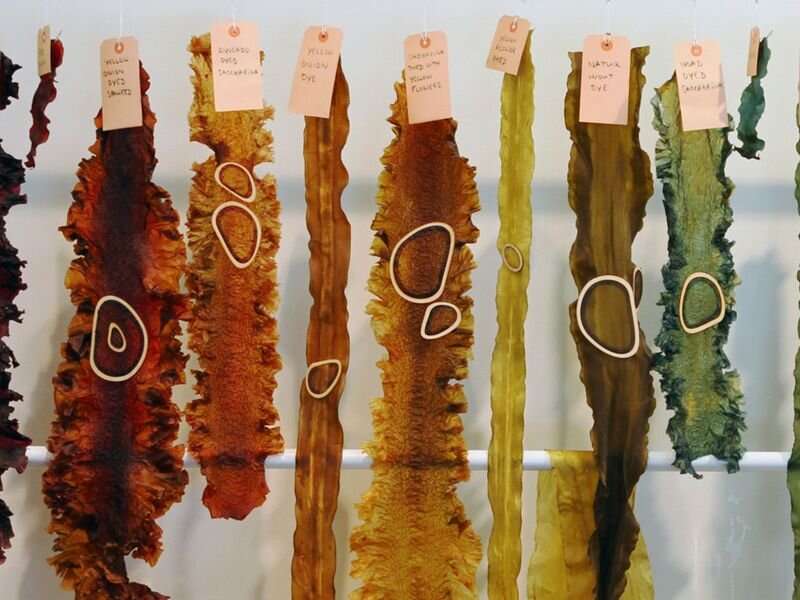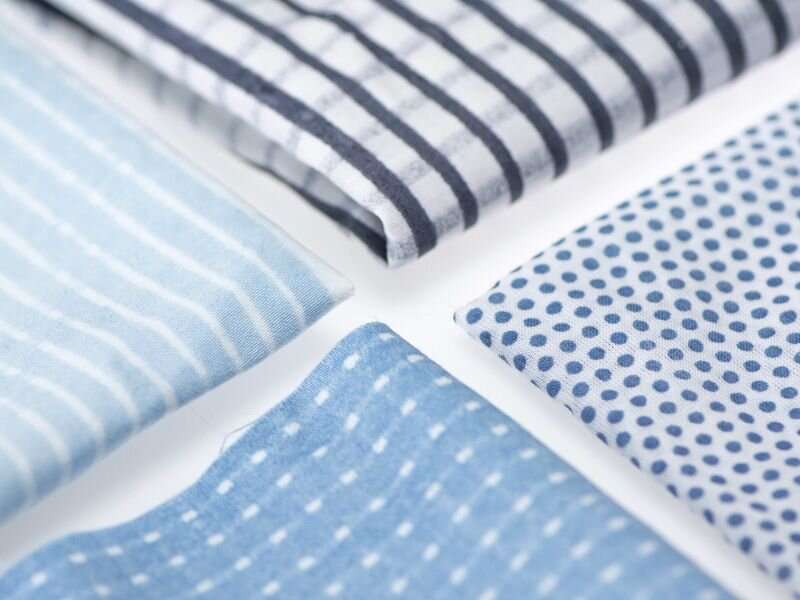Lab-grown pigments and food by-products: The future of natural textile dyes

As the environmental impact of the fashion and textile industries becomes clearer, the demand and need for sustainable alternatives is growing. One international research group aims to replace toxic synthetic dyes with natural alternatives, ranging from plants to microbes to food waste.
Walk into any clothing store and you’ll find a rainbow of fluorescent shirts, pastel sweaters and blue jeans that rotate in and out of style each season. The colors of each garment are pristine, eye-catching and identical, but there are consequences hidden in those racks of colorful clothes.
Our planet and the factory workers producing our clothes are paying a steep price: toxic chemicals used in the synthetic dyeing process pollute waterways and soil.
Introduced in the 1860s, synthetic dyes and pigments have become commonplace in the textile industry. These dyes are part of the reason why clothes of every color imaginable are so readily available: they offer quick and easy alternatives to the natural sources of color that used to be the only option.
While this synthetic process has become normalized, using natural pigments to dye textiles has been part of human history for thousands of years.
BioColour suggests it’s time to revisit and reimagine this long history.
Associate Professor in Design at Aalto University and member of the BioColour research group Kirsi Niinimäki explains, “We’re looking back in history to see how we can bring the information we had before synthetic chemicals existed to the current day, but also how we can apply it in a more modern way by working with the [textile] industry.”
BioColour is an international research consortium of designers, material scientists, biologists, mathematicians and engineers. These researchers from Finnish, American and Brazilian universities and research institutes work together to find non-toxic and biodegradable natural alternatives to synthetic dyes and pigments.
Natural dyes at an industrial scale
BioColour’s research isn’t just about identifying and testing natural color sources, it’s also about working with the textile industry and consumers to bring widespread change to the new normal of synthetic colors.
One such example comes from Finnish design house Marimekko. Using dyer’s woad, a plant native to Finland, the project tested this alternative to synthetic indigo, a dye that’s created using toxic chemicals like formaldehyde.
This collaboration revealed an additional perk of natural dyes: as a Finnish design house, by using a plant cultivated in Finland, Marimekko could tell a local story with dyer’s woad that wasn’t possible with synthetic indigo.
Such collaborations are an opportunity to challenge and learn from each other, says Niinimäki. While BioColour challenges industry partners to work with different methods and recipes that draw on historical practices, industry partners put dye recipes to the test outside of precise laboratory conditions.
“In a laboratory, it’s possible [to adjust] processes, but when we go to the industry, it’s not possible to precisely modify the recipes,” says Niinimäki, ‘we have to accept the industrial processes and what comes out of them.”
The textile industry isn’t the only source of collaboration: Food and agricultural industries create massive amounts of biowaste that spell untapped potential of natural dyes. By-products such as onion skins and willow bark from these industries can be used to dye clothing, creating new side streams and reducing waste.
Though the details are still secret, Niinimäki also described an ongoing collaboration with a food company that aims to investigate how much pigment can be extracted from food waste material. They will also test the durability of said colors.

Changing attitudes towards color
Ensuring consumers are willing to purchase naturally dyed textiles is vital in the quest to replace synthetic dyes. Yet, consumers still find this concept to be a strange one, according to Niinimäki.
Synthetic dyes are appealing because they provide long-lasting and identical colors between each garment. As Niinimäki points out, however, that ‘sameness’ is one of fast fashion’s problems.
“Blue is a trendy color, but why does everything have to be the same blue? Even in mass production, why can’t we accept that there might be different kinds of blue? Why does everything have to be the same?”
Natural dyes, which are not as stable, may look different from garment to garment and even fade over time.
These fading colors don’t need to be seen as a negative, however.
Niinimäki believes fading colors open the door to an attractive new type of design: garments could be designed to reveal new patterns as certain colors fade over time.
While BioColour’s consumer studies aim to identify and change current attitudes to colors and textiles, other researchers in the group are investigating the durability and longevity of natural dyes. Fading colors may offer interesting design potential, but they aren’t the only option.
Drawing on history to invent the future
Natural sources of color aren’t limited to plants and mushrooms—the world of microbes offers huge potential for the future of dyes and pigments.
Bacteria can be a source of non-toxic biodegradable pigment and a method of helping dyes to stick to textile fibers. Using bacteria in the natural dyeing process harkens back to the slower pace of fashion, as it can take weeks of growing and feeding the bacteria.
This use of bacteria in the dyeing process has inspired BioColour collaborators from the VTT Technical Research Center to investigate lab-grown colorants. Their research explores how the DNA of microbes can be modified to produce a variety of different pigments that could be scaled to wider textile production.
Lab-grown colorants are a particularly promising future because, as Niinimäki explains, there is limited land to cultivate plants for dyes. Climate change is and will continue to change our environment and cause food and water insecurity. This means resources will need to be diverted to food cultivation.
These pigment-producing microbes expand the possibilities of non-toxic, biodegradable dyes while saving land and resources in the process.
While it may be drawn from history, the research behind natural dyes is anything but old news.
New method can remove dyes from wastewater
Citation:
Lab-grown pigments and food by-products: The future of natural textile dyes (2022, September 30)
retrieved 30 September 2022
from https://phys.org/news/2022-09-lab-grown-pigments-food-by-products-future.html
This document is subject to copyright. Apart from any fair dealing for the purpose of private study or research, no
part may be reproduced without the written permission. The content is provided for information purposes only.
For all the latest Science News Click Here
For the latest news and updates, follow us on Google News.

